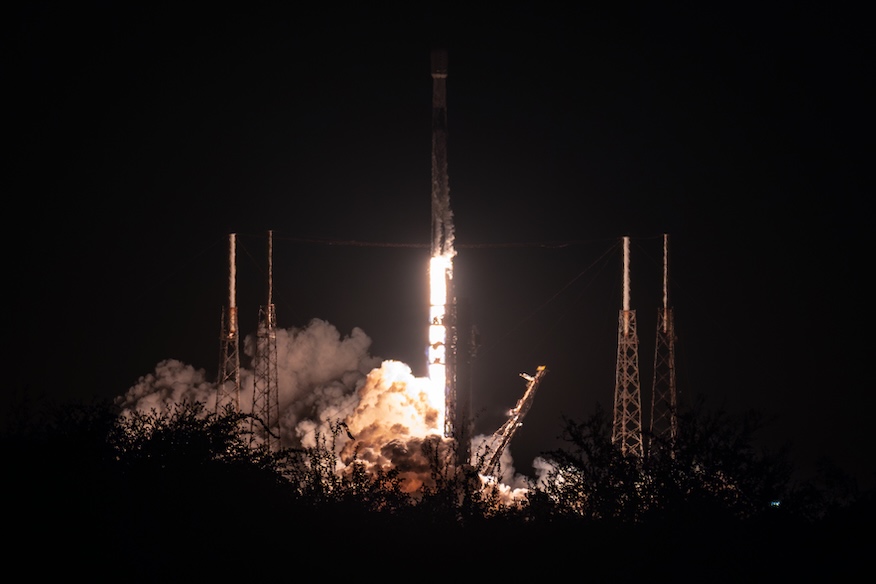
Update Nov. 15, 2:24 a.m. EST (0724 UTC): SpaceX landed its first stage booster.
SpaceX kicked off the weekend with a pair of Falcon 9 launches. With both flights depart Florida’s Space Coast at about three hours and 35 minutes of each other, this was the second shortest turnaround from Cape-based flights for SpaceX.
The Starlink 6-85 mission was the second scheduled to fly, departing from pad 40 at Cape Canaveral Space Force Station at 1:44 a.m. EST (0644 UTC). The Starlink 6-89 mission launched from pad 39A at NASA’s Kennedy Space Center at 10:08 p.m. EST (0308 UTC).
Each mission carried 29 Starlink V2 Mini satellites on board.
Given the proximity of the two missions, the 45th Weather Squadron issued identical forecasts for both missions, citing a greater than 95 percent chance for favorable weather at liftoff. After a few days of notable solar activity, launch weather officers dropped the potential for solar impacts down to a moderate risk on a low-moderate-high scale.
The Starlink 6-85 mission launched with the Falcon 9 booster with the tail number B1078, which flew for a 24th time. Its previous missions included Crew-6, USSF-124 and AST SpaceMobile’s BlueBird 1-5.
About 8.5 minutes after liftoff, B1078 performed an autonomous landing on the drone ship, ‘Just Read the Instructions’, which was positioned in the Atlantic Ocean to the east of The Bahamas.
With the pair of Starlink missions, SpaceX now has nearly 9,000 of its satellites in low Earth orbit.

